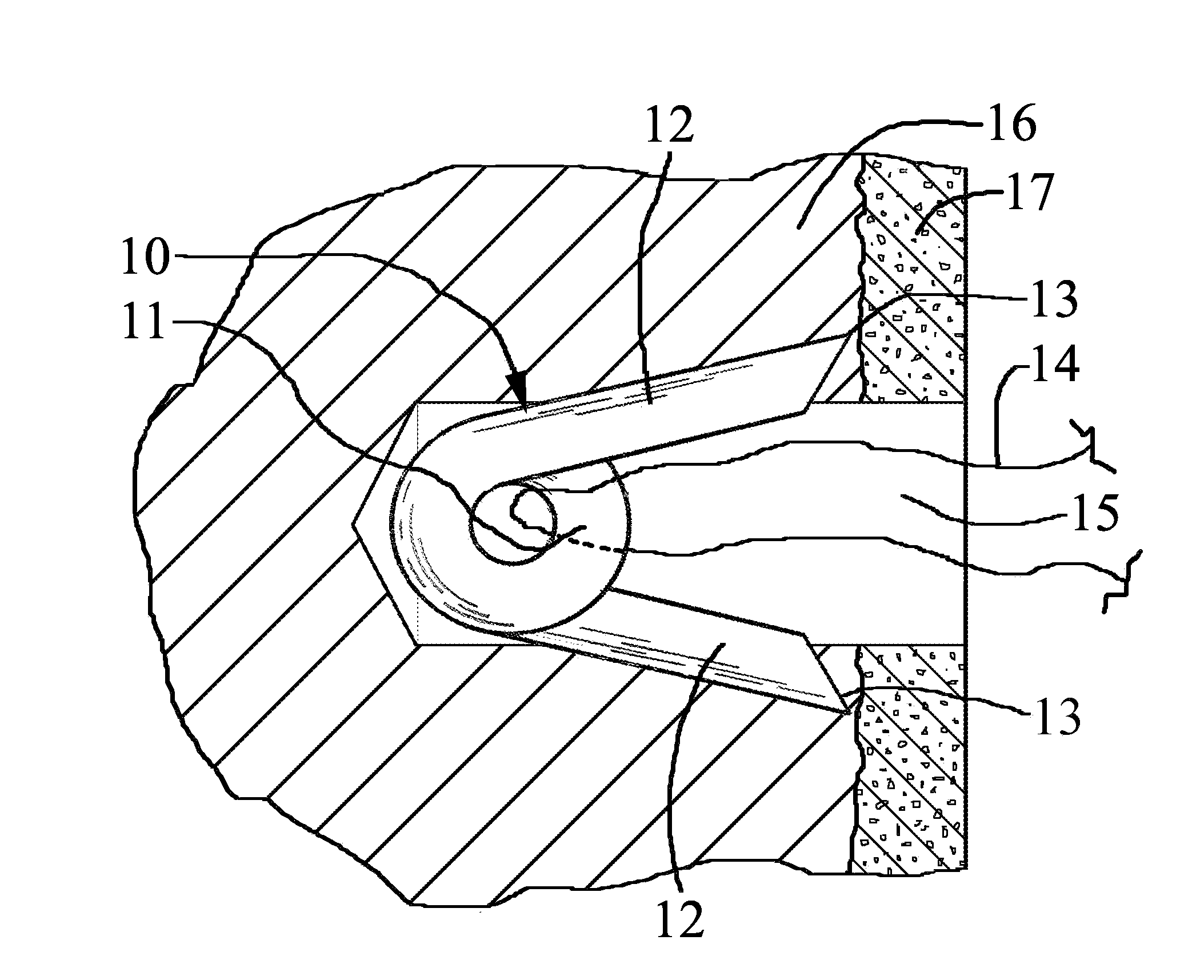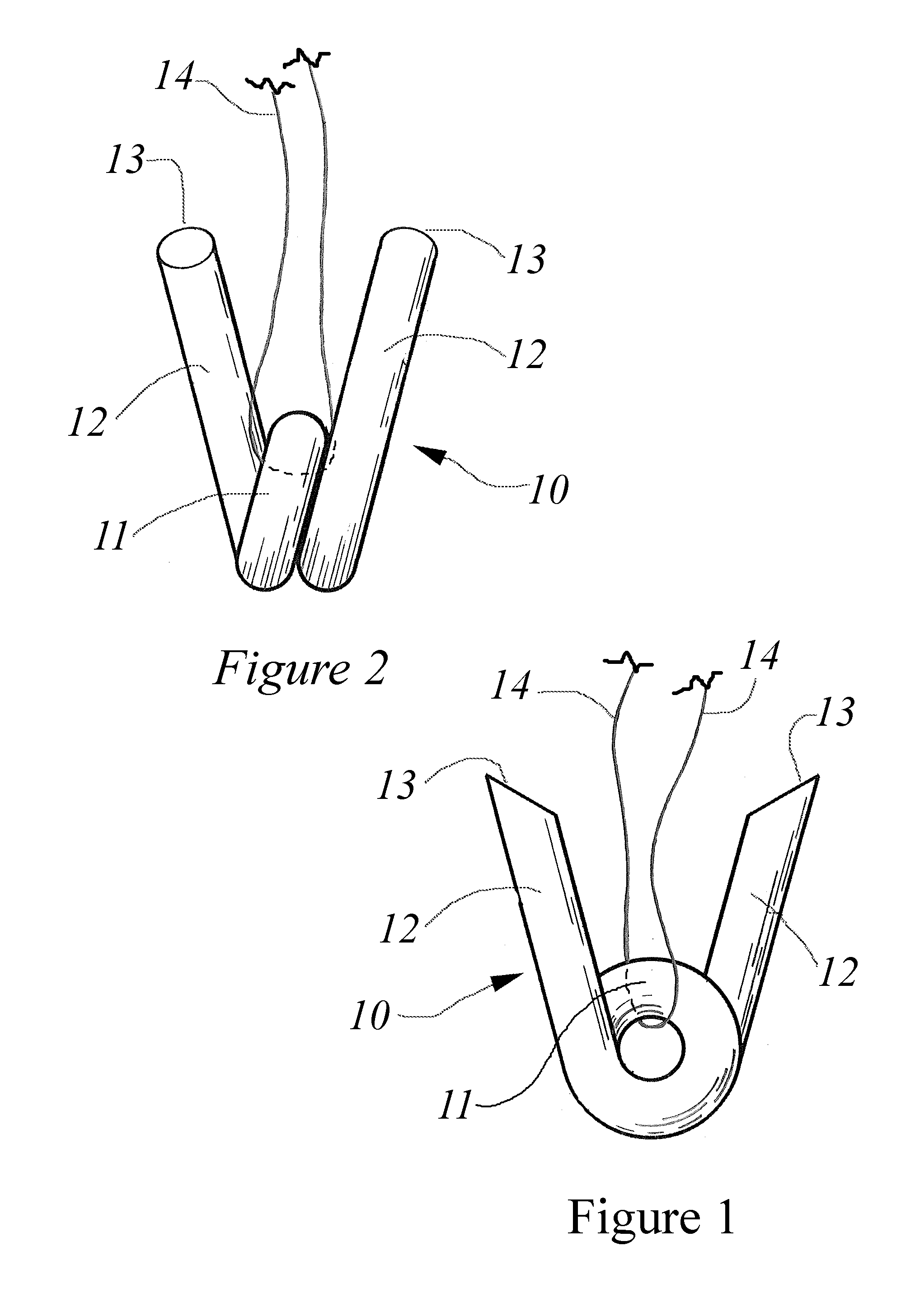Suture anchor and method for attaching soft tissue to bone
a technology of soft tissue and bone, which is applied in the field of suture anchors and methods for attaching soft tissue to bone, can solve the problems of affecting the application of sutures, affecting the healing effect of soft tissue,
- Summary
- Abstract
- Description
- Claims
- Application Information
AI Technical Summary
Benefits of technology
Problems solved by technology
Method used
Image
Examples
Embodiment Construction
[0028]Referring specifically to FIGS. 1, 2 and 3, a resiliently flexible wire is bent and twisted to form a suture anchor 10 with a suture retaining loop 11 positioned at the center of a precisely measured and cut length of wire. The suture loop 11 constitutes the proximal end of the anchor device 10 and in the preferred embodiment has a helical shape that provides spring flexibility to the two wire ends that make up the two diverging legs 12. In the illustrated embodiment the wire forms approximately one and three quarters helical loops 11 with the ends of the wire extending away from the loop to make two legs 12 diverging at a desired angle of between 30 degrees to 45 degrees depending on the anchors intended use. The two legs 12, when unconstrained, have their pointed ends 13 spaced at a distance that is greater that the diameter of the bone tunnel 15 that has been drilled into the bone 16 to which the suture anchor is to be deployed. The suture 14 is passed through the suture re...
PUM
 Login to View More
Login to View More Abstract
Description
Claims
Application Information
 Login to View More
Login to View More - R&D
- Intellectual Property
- Life Sciences
- Materials
- Tech Scout
- Unparalleled Data Quality
- Higher Quality Content
- 60% Fewer Hallucinations
Browse by: Latest US Patents, China's latest patents, Technical Efficacy Thesaurus, Application Domain, Technology Topic, Popular Technical Reports.
© 2025 PatSnap. All rights reserved.Legal|Privacy policy|Modern Slavery Act Transparency Statement|Sitemap|About US| Contact US: help@patsnap.com



